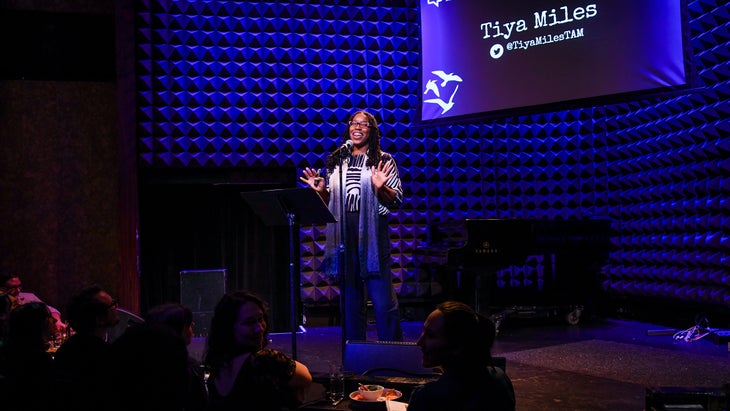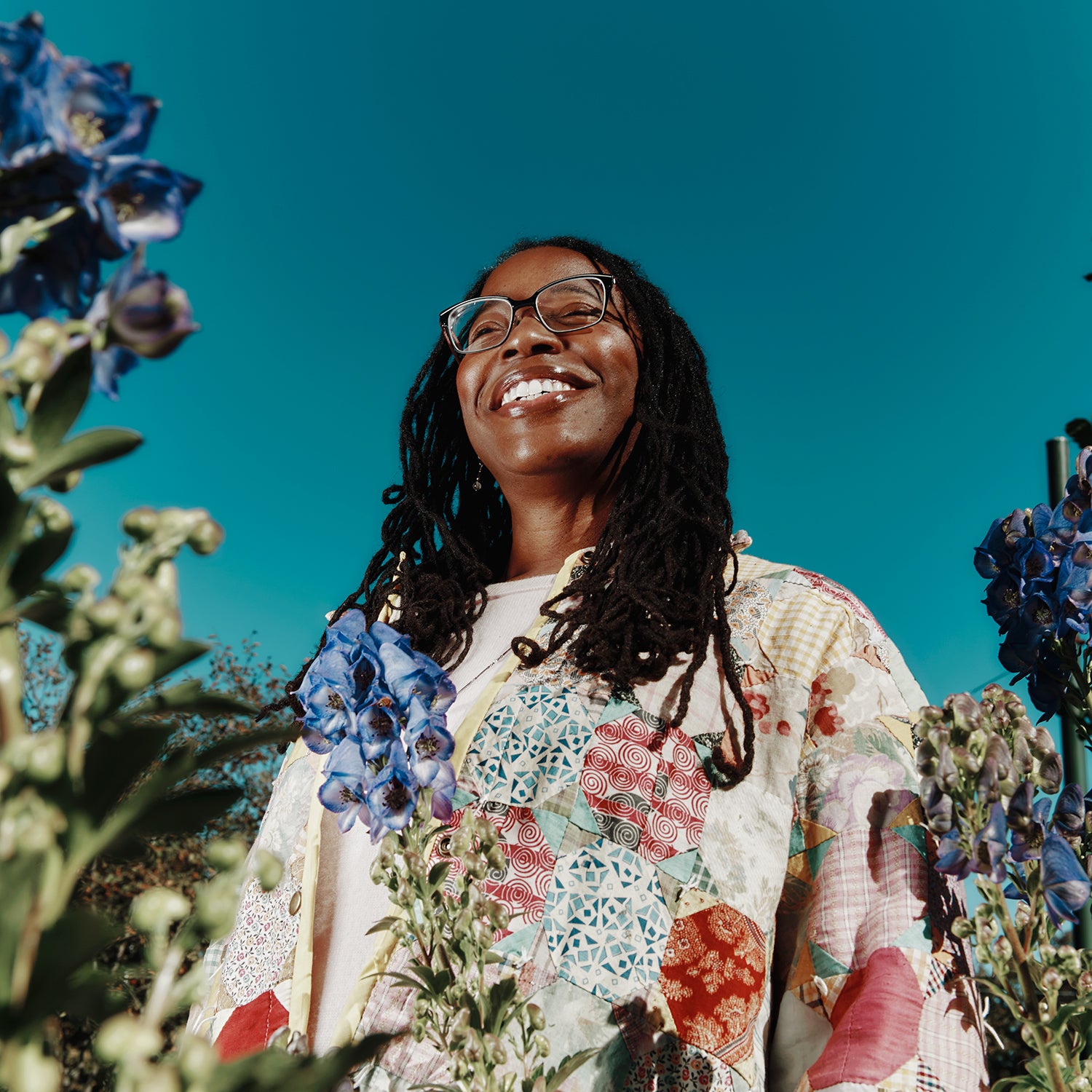Araminta “Minty” Ross was born into slavery in 1822 on the shores of the Chesapeake Bay. As a girl, she dreaded doing domestic work that kept her indoors under the hawkish eye and often abusive hand of a mistress. As a teenager, she was hired out to do the kind of grueling agricultural labor usually assigned to men, and she later worked alongside her father, a lumberman, learning how to forage and to follow waterways. Eventually, she used the survival skills and physical endurance she’d developed not only to escape north to her own freedom, but also to lead more than a dozen successful missions to liberate over 70 enslaved people. Ross navigated for those groups under cover of night and in freezing winter conditions. She hid people in swamps, showed them which plants could be eaten safely, and deployed her knowledge of the woods to evade slave hunters. For this she would one day be described as “the ultimate outdoorswoman” by a park ranger. Most of us know her by the name she adopted in her twenties: Harriet Tubman.
This fresh look at the Tubman narrative is one of many stories from the new book , by Tiya Miles. In Wild Girls, Miles, an author and a professor of American history at Harvard University, reexamines the lives of female trailblazers to reveal how playing and working outside as girls prepared them to subvert the status quo as adults. A childhood full of climbing trees and challenging boys to footraces in Victorian-era New England, for example, inspired Louisa May Alcott to create the feisty, independent Jo March in Little Women. Annual migrations between summer and winter settlements in the Rocky Mountains equipped a 16-year-old Shoshone girl named Sacagawea, who was kidnapped and sold or exchanged to a French trader to be one of his “wives,” to serve as Lewis and Clark’s most valuable guide. Before she founded the United Farm Workers Association with Cesar Chavez in 1962, Dorothy Huerta learned “to be strong,” she said, from hikes through the Sierra Nevada with her Girl Scout troop.
In Wild Girls, Miles focuses on women of the 19th century, when, she writes, indoor spaces represented both literal and psychic confinement. White women were relegated to the domestic sphere at a time when performing physical work or playing sports was considered unfeminine. Enslaved Black women working in the house endured the surveillance of the women who controlled them and sexual predation by the men, even as the outdoors connoted both the toil of forced labor and the beauty of nature. Native girls sequestered in boarding schools had their culture and identity systematically assailed. Indoor spaces were heavily regimented along gender lines, Miles argues, while the outdoors was where girls could be freer from restrictive social norms and supervision. Her thesis: time in nature expanded their minds, readying them for revolutionary thought.
Miles herself was profoundly shaped by time outdoors in her youth. Growing up in Cincinnati in the 1970s, shuttling between divorced parents’ homes, she spent hours exploring abandoned buildings and empty lots in the urban neighborhood around her mother’s house, discovering relics like old shoes and furniture, and imagining what they might tell her about the past. She visited state parks with her father and stepmother, and at Kentucky’s Natural Bridge State Resort Park, Miles saw a landscape so awe-inspiring that she wrote about it for a Bible class assignment requiring her to describe an experience with God.
Miles’s most treasured memories outdoors were of times spent with her maternal grandmother on the porch of her Craftsman bungalow or in the garden she lovingly tended. Her grandmother told her stories about her childhood in rural Mississippi, where her family had been sharecroppers. The stories were always rooted in the environment: how green and lush and sustaining the country, how backbreaking the labor in the cotton fields. Miles’s grandmother also described the day when armed white men rode onto the family farm on horseback and forced her father to sign away almost all of their land and possessions. “There was this memory of an idealized Southern nature accompanied by a terrorized Southern nature,” Miles told me when we spoke in the fall. “At the same time,” she continued, citing her grandmother’s ability to save over decades to buy that Craftsman, “there was a present-day experience of the pleasure and pride of having one’s own little bit of the outdoors, one’s own little garden.” The idea that Black people have a complicated yet nonetheless deep and sustaining relationship with the outdoors is a theme Miles has explored in her writing again and again.
Indoor spaces were heavily regimented along gender lines, Miles argues, while the outdoors was where girls could be freer from restrictive social norms and supervision.
In 2005, while Miles was teaching at the University of Michigan, she learned at an academic conference that Harriet Tubman had been an outdoors woman. The epiphany electrified her. “What amazed me was that this was something obvious, staring us right in the face,” she told me.
“The way we think about nature and the environment in this country is fairly limited,” says Carolyn Finney, author of the book Black Faces, White Spaces: Reimagining the Relationship of African Americans to the Great Outdoors. “We either see nature as a supermarket of resources or a place for outdoor recreation.” Tubman doesn’t fit into either category in that narrow view; nor do the relationships that many people of color have with the outdoors. For example, Finney points out, “Labor has never been seriously considered as a way to have a really strong relationship with nature.” This narrow mindset has led to the erasure of Black people and other people of color from the conversation about environmentalism, she says. The stories in Wild Girls, then, also quietly expand the idea of what it means to be an outdoors person. Miles wants readers to know that, as she writes, “People imagined to exist outside only as exploited laborers or romanticized symbols have in fact lived large and impactful lives outdoors.”
Soon after the revelation about Tubman, Miles, who began her research in African American and Native American women’s histories, became increasingly interested in environmental action. Also in 2005, Hurricane Katrina devastated New Orleans, disproportionately affecting Black residents, and Miles saw that the effects of climate change were likely to hit poor communities and people of color hardest. In her work, she began to collect notes on how enslaved people related to nature. In 2011, she founded a nonprofit, ECO Girls, which provided environmental cultural experiences in southeast Michigan. These efforts culminated more than a decade later in Wild Girls.

Miles, an artful explainer who often began her responses to my questions by summarizing the points to be covered, told me that there were two reasons she felt compelled to share stories like Tubman’s. “I think it’s important for all of us to understand the complexity and multidimensionality of Black experience,” she said. “Black people and other marginalized groups have been too often reduced to stereotypical elements and not considered or respected or understood in the wholeness of their beings.”
The other reason, she said, is to reveal to Black women and other women of color that their history is rooted in the outdoors; that they, too, have inherited a deep connection to nature. In doing so, she hopes to activate them to meet the environmental challenges ahead. “I want Black women to feel equipped to know that we stand on this earth, we live with this earth, we are part of this earth,” she says. “It’s our duty to try to protect the home that we depend on, as well as the many other creatures we share it with.”
“The way we think about nature in this country is fairly limited,” says author Carolyn Finney. “We either see it as a supermarket of resources or a place for outdoor recreation.”
While Wild Girls focuses on women of the 19th century, Miles ends the book by connecting her ideas to the present day, when science shows the many benefits of time spent outdoors, from lowering anxiety and blood pressure to boosting mental well-being and cognitive function. “There are social demands, expectations, and pressures that kids and people of all genders face right now,” she says. “We could all benefit from being able to put some of that aside and go out into an environment that’s less prescripted, in order for us to determine who we want to be.”
The pandemic in particular exposed unequal access to green spaces, especially for poor communities and people of color. Studies found, for example, that Black and Asian teens were less likely than their white counterparts to visit parks during the early months of the pandemic, and were more likely to feel emotionally distressed. Areas that were predominantly non-white had both less green space and higher rates of COVID-19.
When I asked Miles for some practical ways to make it easier for everyone to get outside, she suggested that people start by ensuring that everyone feels welcome in their own communities. “Visual signifiers” can help, she said, like a sign in her neighborhood that reads WITCHES AGAINST WHITE SUPREMACY, which, she tells me, made her chuckle. “I thought, This is a street I want to walk on.” Miles also suggested that people contribute not only to organizations that work toward conservation, but also to those that improve access for underrepresented groups.
Miles’s forthcoming projects include a book entirely about Tubman, and her first foray into climate fiction. She and her husband, also a Harvard professor, spend their summers in Montana, where he’s from. Their home base in Bozeman is the launching pad for most of their hikes and visits to national parks. But in Cambridge, too, Miles tries to get outside as much as possible, even if it just means taking her laptop outdoors. For her, time in nature is still key to maintaining gratitude and optimism, even while her work immerses her day after day in our country’s fraught racial history and our planet’s warming future. “Even though it’s a very destabilizing time,” she says, “it’s also a time when possibly, maybe, the things we all do can matter more because the stakes are so high. I think we all can have a heightened sense of purpose right now. That sense of purpose really does energize me.”


